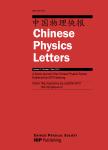Observation of Spin Polarized Clock Transition in 87Sr Optical Lattice Clock
Observation of Spin Polarized Clock Transition in 87Sr Optical Lattice Clock作者机构:National Institute of Metrology Beijing 100013 Department of Precision Instrument Tsinghua University Beijing 100084
出 版 物:《Chinese Physics Letters》 (中国物理快报(英文版))
年 卷 期:2014年第31卷第12期
页 面:45-48页
核心收录:
学科分类:080903[工学-微电子学与固体电子学] 070207[理学-光学] 07[理学] 0809[工学-电子科学与技术(可授工学、理学学位)] 08[工学] 0803[工学-光学工程] 0702[理学-物理学]
基 金:Supported by the National Basic Research Program of China under Grant No 2010CB922902 and the National Natural Science Foundation of China under Grant No 91336212
主 题:SPIN polarization OPTICAL lattices PHASE transformations (Physics) LASER cooling FERMIONS SEMICONDUCTOR lasers
摘 要:Atomic clocks operating at optical frequencies, with much better accuracy compared with microwave atomic clocks, have been assumed to be the next- generation time and frequency standards, Many applications will benefit from this lower frequency un- certainty of optical clocks, such as the re-definition of 'the second', i.e. one of the seven base units of the international system of units (SI), test of the time variation of fundamental physical constants and rel- ativity geodesy. Recently, the neutral atom lattice clock has achieved a lower frequency uncertainty com- pared with the optical ion clock, mainly due to the im- provement of the clock laser frequency stability refer- enced to a long high-finesse ULE cavity and the more accurate evaluation of black-body radiation shift. Strontium is an excellent candidate for the neutral atom optical clock. For the fermionic isotope of stron- tium, it has intrinsically less collision shift and the first order Zeeman shift can be removed by an inter- leaved probing ***, through the pre-cise measurement of the polarizability of strontium, the black body radiation (BBR) shift of the stron- tium lattice clock, which remains to be the limitation factor of its total frequency uncertainty, is reduced to a lower 10^-18 *** instability of the strontium lattice clock has reached 3.1 × 10-16/√T, showing the significant advantage over the single ion optical clock. The total systematic uncertainty has reached 6.4 × 10^-18 in fractional frequency, which is the best among all optical clocks until now.



